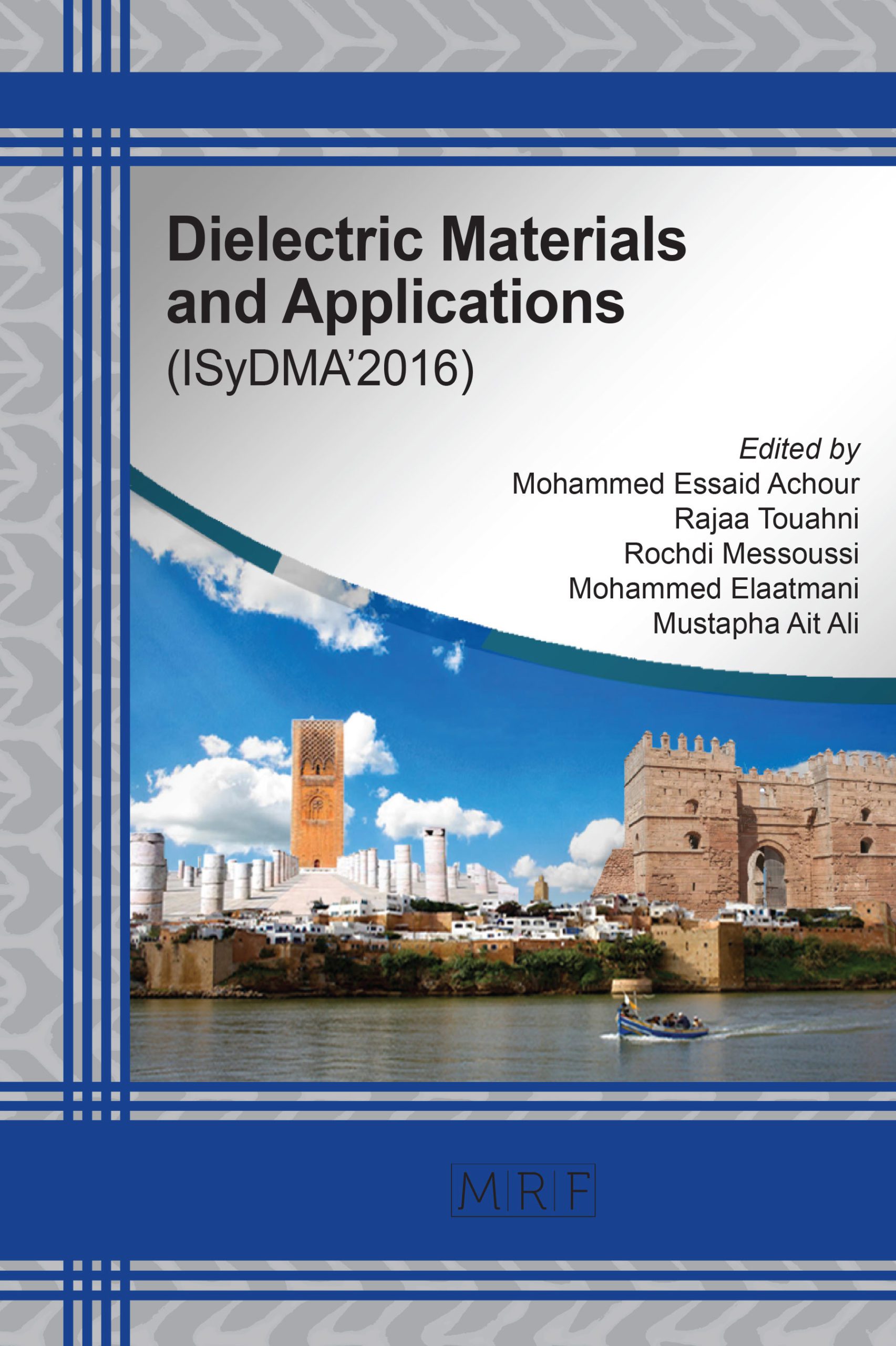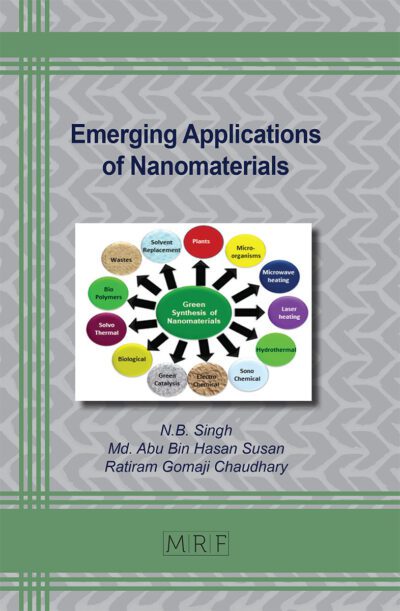Y. ESSAADAOUI, L. KADIRI, E.H. RIFI, A. LEBKIRI
Abstract. The lignocellulosic residues can be developed in the treatment of wastewaters as clean and low costs natural adsorbents. In the present study, our approach consists to develop the preparation and physico-chemical characterization methods of an adsorbing material, starting from the barks of eucalyptus “eucalyptus camaldulensis”. The preparation of the adsorbent material comprises the sieving of barking, extraction of extractable, treatment with formaldehyde as activating agent, and chemical treatment with acrylic acid by the grafting reaction. The chemical modification is checked using means of analysis such as: Fourier transform infrared (FTIR), X-rays Diffraction (DRX) (Index of crystallinity) and method of Boehm. The chemical modification of the lignocellulosic material induced by a change in the microstructure of the material, especially in the case of grafting of acrylic acid and the crosslinking with formaldehyde in favor of the rise in the potential of adsorption capacity .
Keywords
Lignocellulosic Material, Bark of Eucalyptus, Chemical Treatment, Capacity of Adsorption, Characterization
Published online 12/10/2016, 5 pages
Copyright © 2016 by the author(s)
Published under license by Materials Research Forum LLC., Millersville PA, USA
Citation: Y. ESSAADAOUI, L. KADIRI, E.H. RIFI, A. LEBKIRI, ‘Characterization of the microstructure of bark of eucalyptus “eucalyptus camaldulensis”’, Materials Research Proceedings, Vol. 1, pp 298-302, 2016
DOI: http://dx.doi.org/10.21741/9781945291197-74
The article was published as article 74 of the book Dielectric Materials and Applications
References
[1] Natarajan Rajamohan, Manivasagan Rajasimman, Rajan Rajeshkannan, Viswanathan Saravanan. Equilibrium, kinetic and thermodynamic studies one the removal of Aluminum by modified Eucalyptus camaldulensis barks Original Research Article. Alexandria Engineering Journal, Volume 53, Issue 2, June 2014, Pages 409-415. http://dx.doi.org/10.1016/j.aej.2014.01.007
[2] Ilhem Ghodbane, Oualid Hamdaoui. Removal of Mercury (II) from aqueous media using eucalyptus bark: Kinetic and equilibrium studiesOriginal Research Article. Newspaper of Hazardous Materials, Volume 160, Issues 2-3, 30 December 2008, Pages 301-309. http://dx.doi.org/10.1016/j.jhazmat.2008.02.116
[3] Ilhem Ghodbane, Loubna Nouri, Oualid Hamdaoui, Mahdi Chiha. Kinetic and equilibrium study for the sorption of cadmium (II) ions from aqueous phase by eucalyptus barkOriginal Research Article. Newspaper of Hazardous Materials, Volume 152, Issue 1.21 March 2008, Pages 148-158
[4] Vikrant Sarin, K.K. Pant. Removal of chromium from industrial waste by using eucalyptus barkOriginal Research Article. Bioresource Technology, Volume 97, Issue 1, January 2006, Pages 15-20. http://dx.doi.org/10.1016/j.biortech.2005.02.010
[5] Randall JM, Hautala E, Waiss AC Jr, Tschernitz JL (1976) Modified barks as scavengers for heavy metal ions. For Prod J 27(11):51-56
[6] Deshkar AM, Dara SS (1988) Sorption of mercury of Techtona grandis bark. Asian Environ 10(4):3-11
[7] Deshkar AM, Bokada SS, Dara 88 (1990) Modified Hardwichia binata bark for adsorption of mercury (II) from water. Water Res 1011-1016. http://dx.doi.org/10.1016/0043-1354(90)90123-N
[8] Fujii M, Shioya S, Ito A (1988) Chemically modified coniferous wood barks as scavengers of uranium from sea water. Holzforschung 42:295-298. http://dx.doi.org/10.1515/hfsg.1988.42.5.295
[9] Freer J, Baeza J, Maturana H, Palma G (1989) Removal and recovery of uranium by modified Pinus radiata D. Don bark. J Chem Technol Biotechnol 46:4148. http://dx.doi.org/10.1002/jctb.280460105
[10] Mellouk H., Doctorate. University of the La Rochelle. France. (2007).
[11] Magali Geay, Véronique Marchetti, André Clément, Bernard Loubinoux, Philippe Gérardin. Decontamination of synthetic solutions containing heavy metals using chemically modified sawdusts bearing polyacrylic acid chains. J Wood Sci (2000) 46:331-333. http://dx.doi.org/10.1007/BF00766226
[12] J. Martin, PhD Thesis. University of Limoges. La France. 214 (2001) 44-2001.
[13] Koncsag et al., 2011C.I. Koncsag, D. Eastwood, A.E.C. Collis, S.R. Coles, A.J. Clark, K. Kirwan, K. Burton Extracting valuable compounds from straw degraded by Pleurotus ostreatus Resour. Conserv. Recy. (2011) doi:10.1016/j.resconrec.2011.04.007. http://dx.doi.org/10.1016/j.resconrec.2011.04.007
[14] Meyer K. H., Chem. Ber. 70 (1937) 266. http://dx.doi.org/10.1002/cber.19370700222
[15] O’Sullivan A. C., Cellulose. 4(3) (1997) 173–207. http://dx.doi.org/10.1023/A:1018431705579
[16] Sain M., Panthapulakkal S., Bioprocess 23(1) (2006) 1–8.
[17] Elabed A., Doctorate of the University Mohammed V Agdal, Reduction, Morocco (2007).
[18] Marcovich N. E., Reboredo M. M., Aranguren M. I., J. Appl. Polym. Sci. 61(1) (1996) 119-124. http://dx.doi.org/10.1002/(SICI)1097-4628(19960705)61:1<119::AID-APP13>3.0.CO;2-2

































